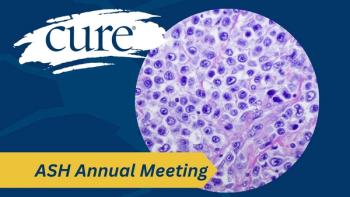
Fertility Preservation Underutilized in Some Young Cancer Groups
Certain groups of pediatric and adolescent patients are less likely to receive fertility preservation consultation, recent research says.
Fertility preservation may be vastly underused for some pediatric, adolescent and young adult (AYA) patients with cancer diagnoses, according to recent research conducted at the Nationwide Children’s Hospital in Columbus, Ohio.
The researchers examined 160 patients at their institution, of which 82 (51 percent) were diagnosed with leukemia or lymphoma; 32 (20 percent) with central nervous system (CNS) tumors; 30 (19 percent) with sarcoma; and 17 (10 percent) with embryonal tumors. Patient age ranged from 1 to 31 years, with the average being 8 years old.
While all eligible patients were offered fertility preservation, only 69 (43 percent) had a fertility consult, and 20 (29 percent) had a documented fertility preservation attempt after their consultation.
“Our findings show many youth newly diagnosed with cancer are still not receiving fertility counseling, despite support from an expanding body of literature and published guidelines, and the presence of a multidisciplinary fertility team,” the researchers wrote in their study, which was published in the journal Pediatric Blood Cancer.
Both the American Academy of Pediatrics and the American Society of Clinical Oncology (ASCO) published guidelines on
Previous studies have shown that when electronic medical records automatically assign eligible patients for fertility consults, physician behavior and utilization of certain orders can change. Halfway through the study period, the hospital implemented this kind of “opt-out” format, where patients or their families would have to opt out of fertility consults, instead of opt in. As a result, patients were then 3.6 times more likely to receive a consult.
“With the mainstream availability of (electronic medical records), an opt-out is a simple intervention, particularly for programs with a standard consult bundle for newly-diagnosed patients,” the researchers wrote. “In our opt-out system, (fertility preservation) consultation becomes the ‘default’ and as described in medical literature, this can result in increased utilization of the default.”
However, the researchers still noted that younger patients were far less likely to receive fertility preservation consults than their older counterparts. The researchers suspected this is because there may be a misconception that there are not viable options for prepubescent children.
When divided by disease state, patients with CNS tumors were the most likely to receive fertility preservation interventions.
The researchers suggested there may be various factors that contribute to the lack of fertility preservation consults at their institution. First, there is not a full-time navigator at Nationwide Children’s Hospital — a role that can be a crucial step in getting patients the consultation. Also, cost is an issue.
“It should be noted that the financial burden of pursuing (fertility preservation) remains a barrier, as procedures, medications and storage are not typically covered by insurance,” the researchers wrote.
Moving forward, larger, more long-term studies are needed to better understand why certain groups are less likely to receive fertility preservation consults. Also, appropriate interventions are needed to improve these numbers.
“Our findings underscore that strategies are needed to improve access for younger children and disease groups in whom fertility consults are underutilized,” they added. “Interventions to improve fertility care before and after treatment are crucial to optimizing reproductive and psychosocial outcomes.”





